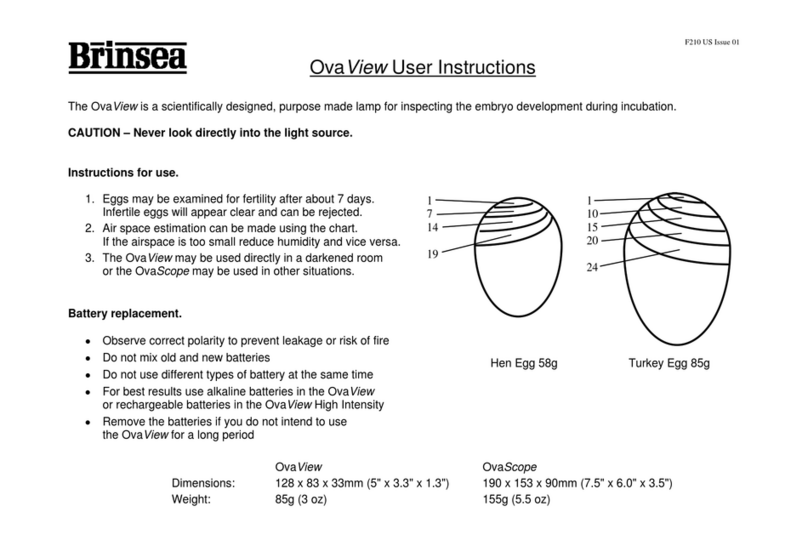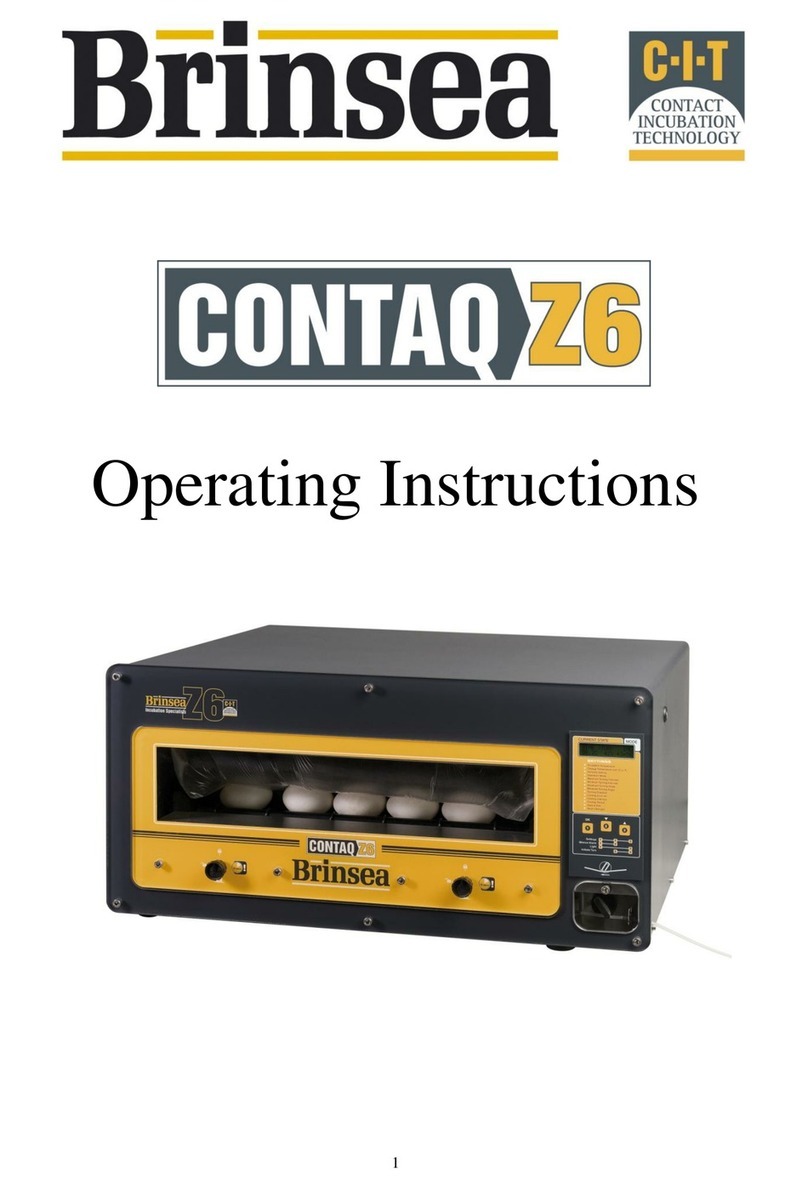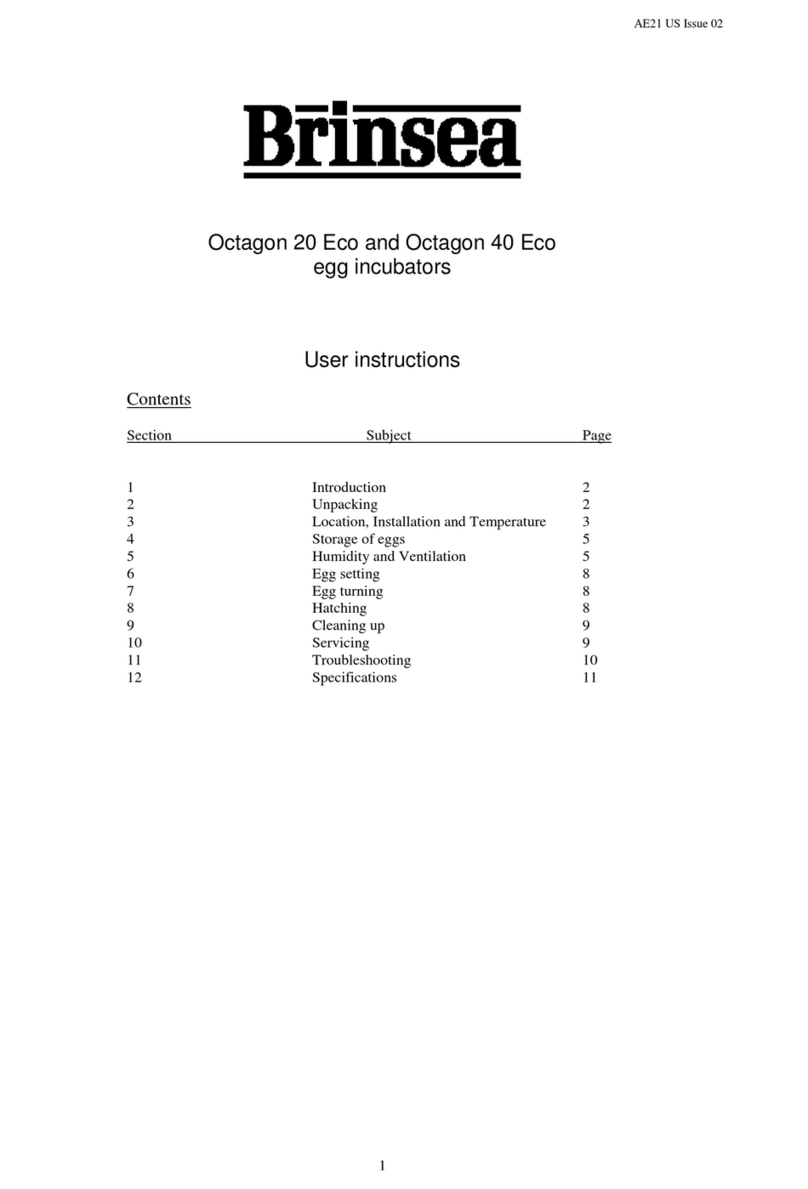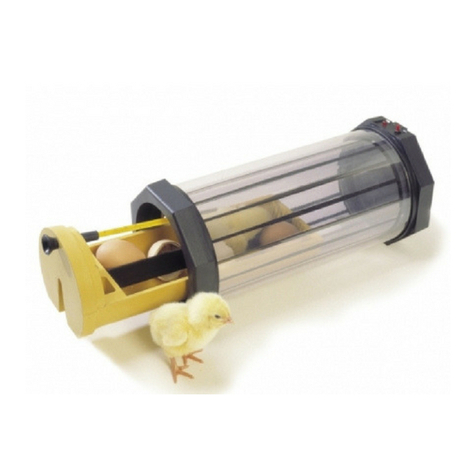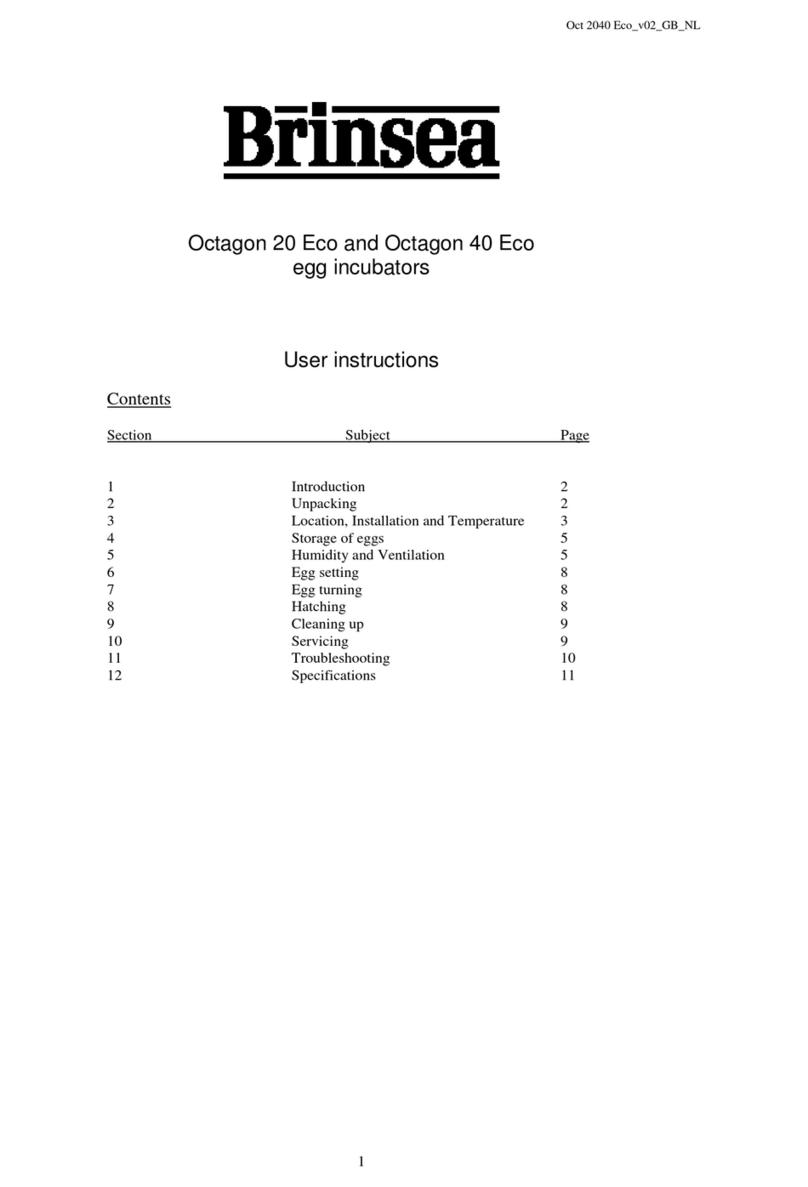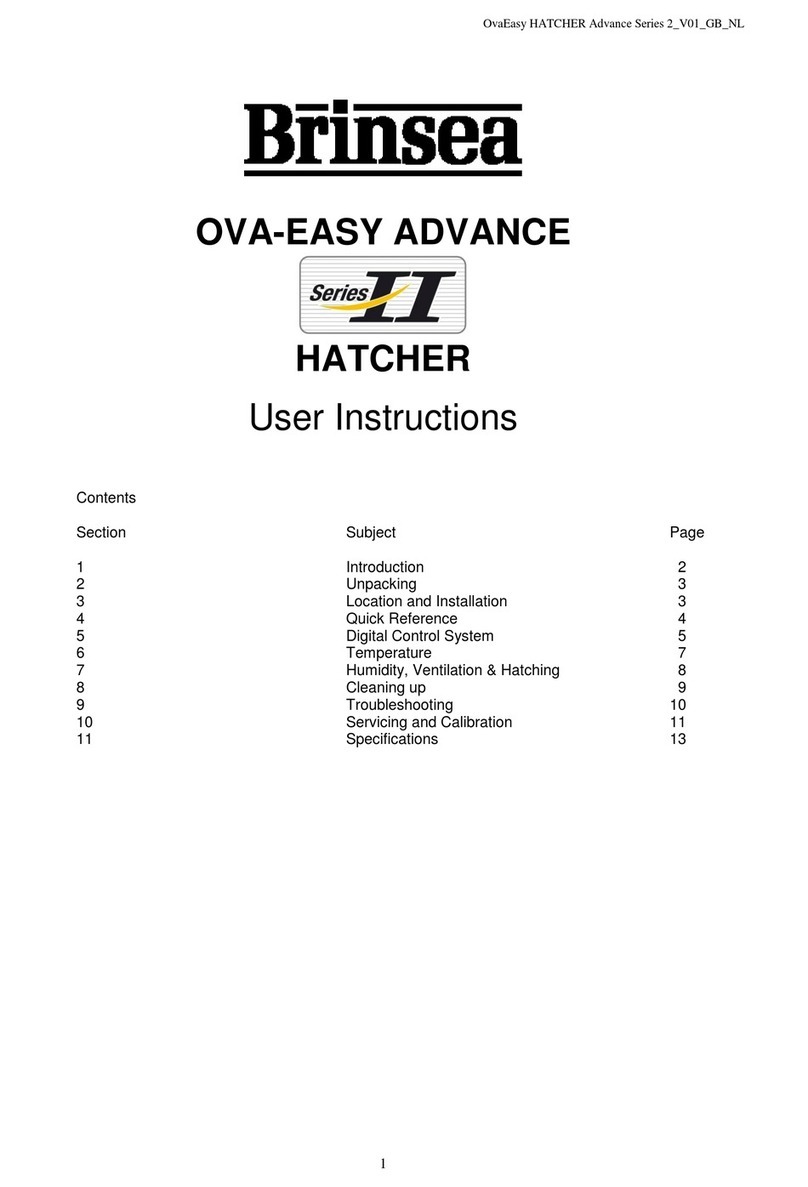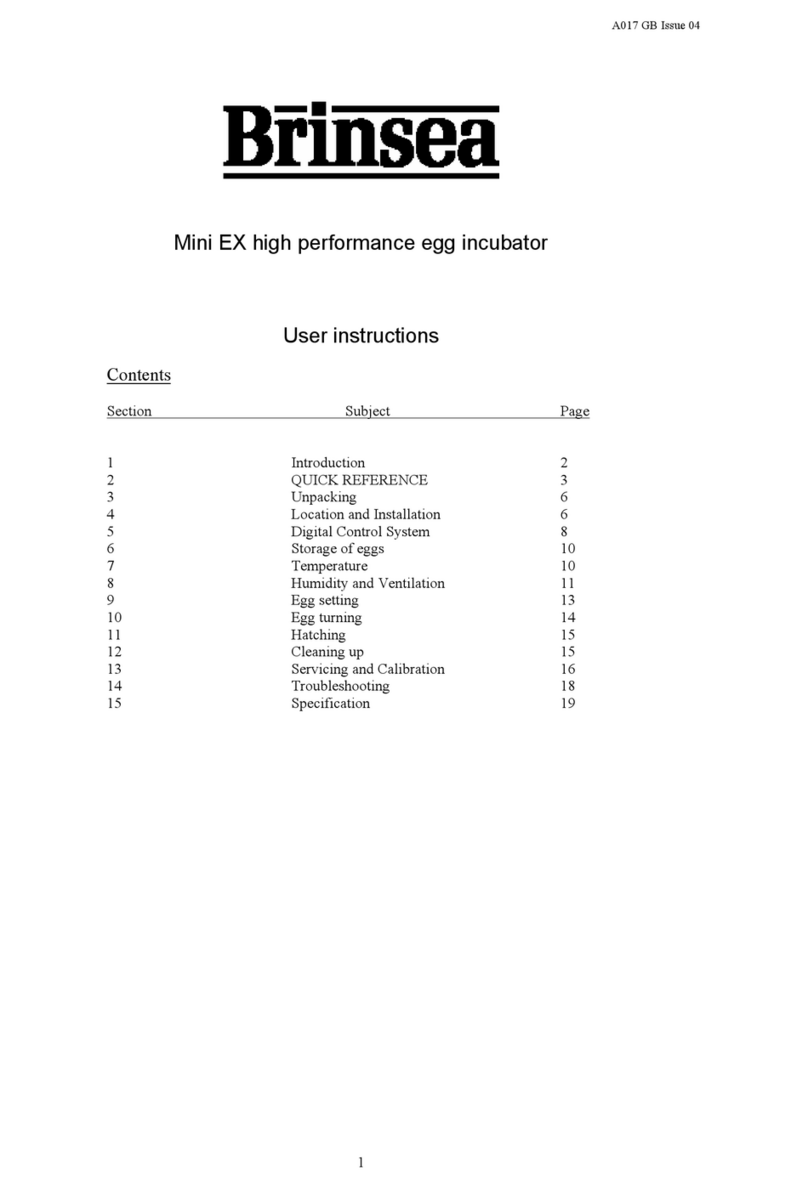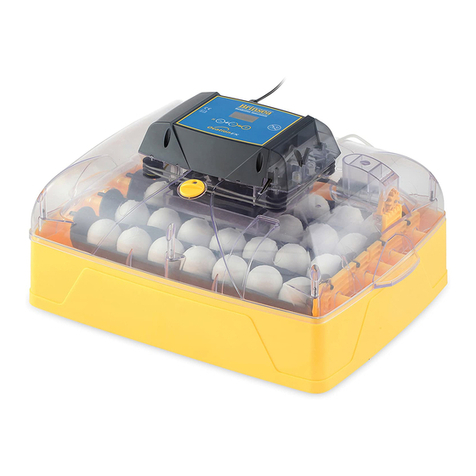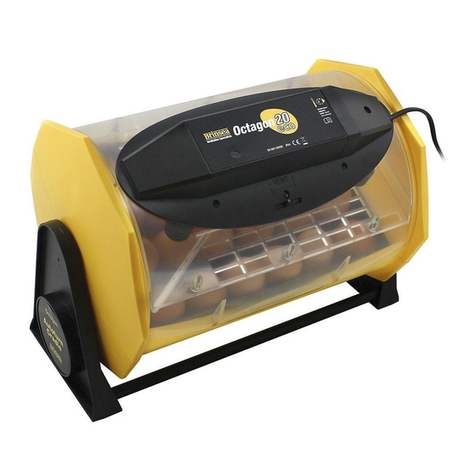MJ1023 GB Issue 01
9
6 Storage of eggs
6.1 Store eggs in cool, damp conditions. Most species may be safely stored for up to 14 days before
serious reductions in hatch rates are likely. Daily turning of stored eggs also helps maintain
hatchability.
6.2 Discard cracked, mis-shaped and heavily soiled eggs (if possible). Only wash soiled eggs using a
brand egg wash solution following the manufacturer’s instructions. It is essential to wash eggs in
solution which is significantly warmer than the egg. Bear in mind that all solutions will remove the outer
cuticle from the egg as well as the dirt and may leave the egg at greater risk from bacterial
contamination in the future.
7 Temperature
Stable and correct temperature is essential for good results. Adjust with care.
7.1 Note: your incubator may not be set to the correct temperature from the factory and the following
procedure must be followed before setting eggs.
7.2 As the incubator warms up and approaches its control setting the heater on asterisk “*” will change
from continuously on to flashing. Allow the incubator to stabilise for at least an hour before adjusting
the temperature.
7.3 SETTING THE TEMPERATURE
Press the - and + buttons simultaneously to unlock the Main Menu.
Press OK to select the temperature screen and adjust as necessary using the + and –buttons.
Press OK to return to the Main Menu and then scroll down to SAVE. Press OK to save the changes.
When reducing temperature the asterisk may go out while the incubator cools –this is normal.
7.4 Refer to the digital temperature display to check temperature. The display shows the air temperature
in increments of 0.1°. Adjust temperature with care –small differences have large effects on hatching
performance.
7.5 The Display can be switched to show all temperature settings in degrees Fahrenheit. Press the - and
+ buttons simultaneously to unlock the Main Menu. Scroll to the C/F option and press OK to select the
C/F display screen. Press the + button to select °F or the –button to select °C. Press OK to return to
the Main Menu and then scroll down to Save. Press OK to save the changes.
7.6 Recommended temperatures: Typical incubation period:
Hens 37.4 –37.6°C 99.3 –99.6°F 21 days
Pheasant 37.6 –37.8°C 99.6 - 100°F 23-27 days
Quail 37.6 –37.8°C 99.6 - 100°F 16-23 days
Ducks 37.4 –37.6°C 99.3 –99.6°F 28 days
Geese 37.4 –37.6°C 99.3 –99.6°F 28-32 days
7.7 Developing embryos are fairly tolerant of short term temperature drops and the user need not be
concerned about cooling that occurs when inspecting eggs. Temperatures above ideal can quickly
have a serious detrimental effect on hatch rates and must be avoided.
7.8 Ova-Easy Advance incubators have a built-in temperature alarm which warns of high or low incubation
temperature and room temperature. See section 5 for details.

